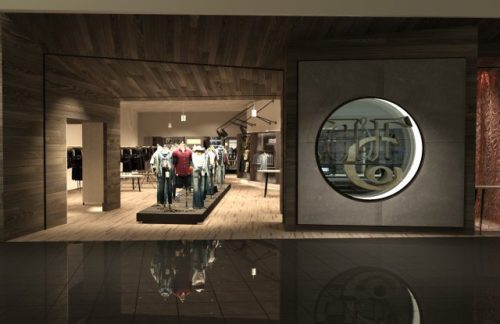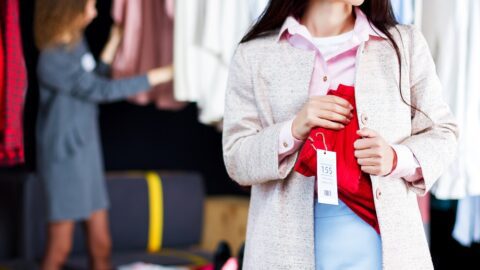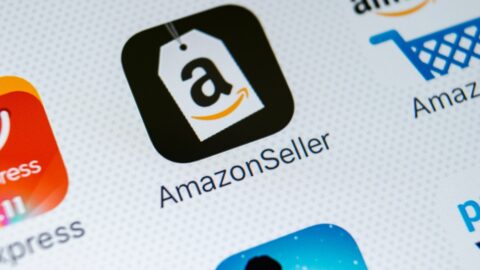 I remember my first purchase at Abercrombie & Fitch. I was in sixth grade and needed a new outfit for class pictures. My mom took me to the mall to find the perfect ensemble: a long-sleeve Abercrombie & Fitch top with the logo emblazoned on the chest, with a pair of cool grey swishy pants (also from A&F). What’s crazy is that the store hasn’t really changed since then — until now.
I remember my first purchase at Abercrombie & Fitch. I was in sixth grade and needed a new outfit for class pictures. My mom took me to the mall to find the perfect ensemble: a long-sleeve Abercrombie & Fitch top with the logo emblazoned on the chest, with a pair of cool grey swishy pants (also from A&F). What’s crazy is that the store hasn’t really changed since then — until now.
As time went on, Abercrombie was what all the cool kids (now called Millennials) wore. But while we were growing up, Abercrombie & Fitch didn’t mature along with us — until the retailer announced plans for a major rebranding.
I’ve been making a case for Abercrombie’s comeback since the news started to spread. The retailer’s product assortment was — slowly but surely — being updated with fewer logos, more premium denim, cozy sweaters and even trendy items like off-the-shoulder tops. Losing the T-shirts covered in logos was a step in a better direction, in my honest opinion.
Advertisement
But it wasn’t until I saw a photo of the retailer’s new concept store in Women’s Wear Daily that I thought “Wow, Abercrombie could really be a thing again!” The store, which debuted on Feb. 17, 2017 at the Polaris Fashion Mall in Columbus, Ohio, has a boutique feel with toned-down music and mannequins greeting shoppers (instead of, you know, shirtless male employees).
It obviously wasn’t a smooth road for Abercrombie; the retailer faced flagging sales numbers and a bad rap due to its former CEO Mike Jeffries. But it seems to be on the road to recovery. Here are three things I’ve noticed about Abercrombie’s efforts that other retailers could learn from in their own rebranding initiatives. (I’m looking at you, J. Crew.)
1. Recognize The Problem
The first step in rebranding is to understand why your customers don’t shop with you anymore. In Abercrombie’s case, the Millennial generation grew up and the fashion trends changed. Adults in their late twenties no longer want to be seen as walking advertisements, so Abercrombie’s logo-heavy items didn’t cut it anymore. The retailer stayed true to its original style, but enhanced it to be more timeless: crisp, white button-up shirts, soft basic tees, neutral hues.
2. Upgrade The e-Commerce Experience
Retailers must recognize that one of the first priorities with a rebranding is the e-Commerce web site. Updating content, imagery, campaigns and product assortments on the site is a great introduction to a new and improved brand. Abercrombie focused on e-Commerce before tackling its brick-and-mortar stores. It all started with upgrading the brand’s campaigns to match its new aesthetic. The retailer released new imagery, as well as a video titled: “This is Abercrombie and Fitch.”
Now, the site also sells shoes from well-known brands such as Dolce Vita, Sam Edelman and Superga (some of which are exclusive offerings). While Abercrombie previously sold only its own line of flip flops and sandals, the retailer has now embraced partnering with other brands — a big plus, in my opinion.
3. Hire Creative And Stylish People
A rebrand is nothing if a clothing retailer can’t deliver stylish new products to go along with its new overall look. Abercrombie took this very seriously and hired some well-known designers to head its creative department. The retailer tapped Katia Kuethe, former creative director for Lucky magazine as its creative director, as well as former VP of men’s design at Club Monaco Aaron Levine as the new head of men’s design.
Both Kuethe and Levine can bring something fresh to the table, and their work has already reflected a more mature Abercrombie & Fitch. I truly believe this revamp will be good for the company, but only time will tell. I look forward to seeing where the retailer will go.
If I may provide a bit of advice to Abercrombie & Fitch, in case one of the retailer’s execs is reading this, I’d say take the Ruehl No. 925 route. This retailer — also owned by Abercrombie — was hot in the early 2000s but didn’t last more than a few years. I believe it was way ahead of its time, and could really relate to the new (or returning) Abercrombie & Fitch shopper.









